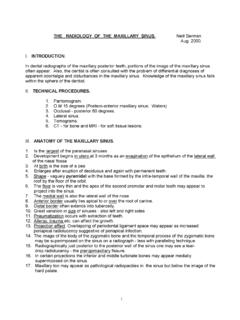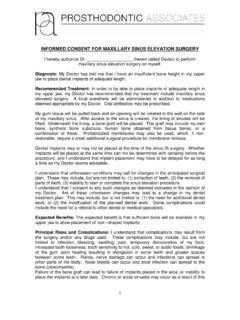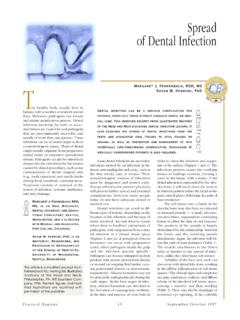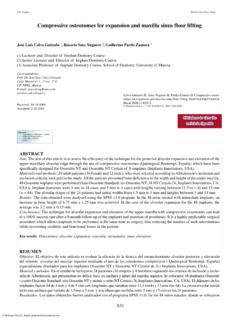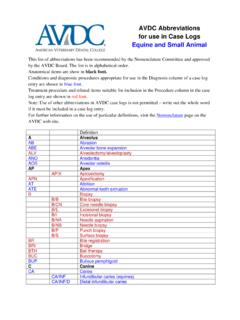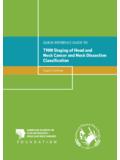Transcription of MIDDLE MEATAL ANTROSTOMY 1. Definition: 2. …
1 MIDDLE MEATAL ANTROSTOMY 1. definition : Enlargement of the natural opening of the maxillary sinus into the MIDDLE meatus. 2. Indications: - Recurrent acute maxillary sinusitis. - Chronic maxillary sinusitis unresponsive to medical therapy - Oro-antral fistula - Choanal polyp - Mucocele - maxillary tumour biopsy - Symptomatic foreign body in maxillary sinus - Part of ethmoidectomy to remove more extensive sinus disease. - Recurrent barotrauma - Treatment of tumours of the lateral nasal wall. To relieve infection of the sinuses causing pain and purulent discharge and to enlarge the sinus opening to improve ventilation and drainage.
2 3. Pre-operative Assessment CT scan of the sinuses is strongly recommended to exclude anatomical variations. Allergy testing may be indicated in certain patients. Surgeons may recommend a trial of pre-operative medical therapy in the form of topical steroids and antibiotics immediately prior to surgery. 4. Method/Operative technigue: The procedure may be done under local or general anaesthetic as a day case or overnight procedure. The patient should usually take one week off work following the operation. The patient should not fly or dive for two weeks following surgery. The procedure is done through the nose with an endoscope or microscope; there are no external sears.
3 There will be a sensation of tenacious mucous production, which is occasionally bloodstained for ten to fourteen days after the operation. The Surgeon will usually recommend a course of topical steroids and saline douches during this period. 5. InformationlConsent: Inmediate Complications: - Bleeding which usually resolves spontaneously. - Tearing which usually resolves spontaneously. - Purulent nasal discharge, which usually resolves after two weeks - Orbital ecchymosis or haematoma Intermediate Complications: - scarring leading to recurrence of disease - Chronic tearing (very rare) Exceptional risks Orbital - due to damage of the muscle which can result in double vision or loss of visual acuity.
4 Meningitis secondary to brain fluid leakage Mortality rate The mortality rate from MIDDLE MEATAL ANTROSTOMY is extremely rare. However, as with ah operative interventions, no matter how minor, mortality can occur as a result of reaction to drugs or very rarely massive bleedings. To put this in context, the risk the patient takes in coming to the hospital for the consultation is much greater than the risk of mortality from MIDDLE MEATAL ANTROSTOMY . Contra-indications: Recent severe upper respiratory tract infection Tendency to bruise or bleed, secondary to inherited disorders or drugs, i.
5 E. HeparinlPlavix Recurrence Recurrence of symptoms may occur especially in patients with systemic conditions such as asthma, Aspirin sensitivity or cystic fibrosis. Alternative to midchle MEATAL ANTROSTOMY Continual use of medical therapy in the form of topical steroids or antibiotics. 6. Outcome measures
